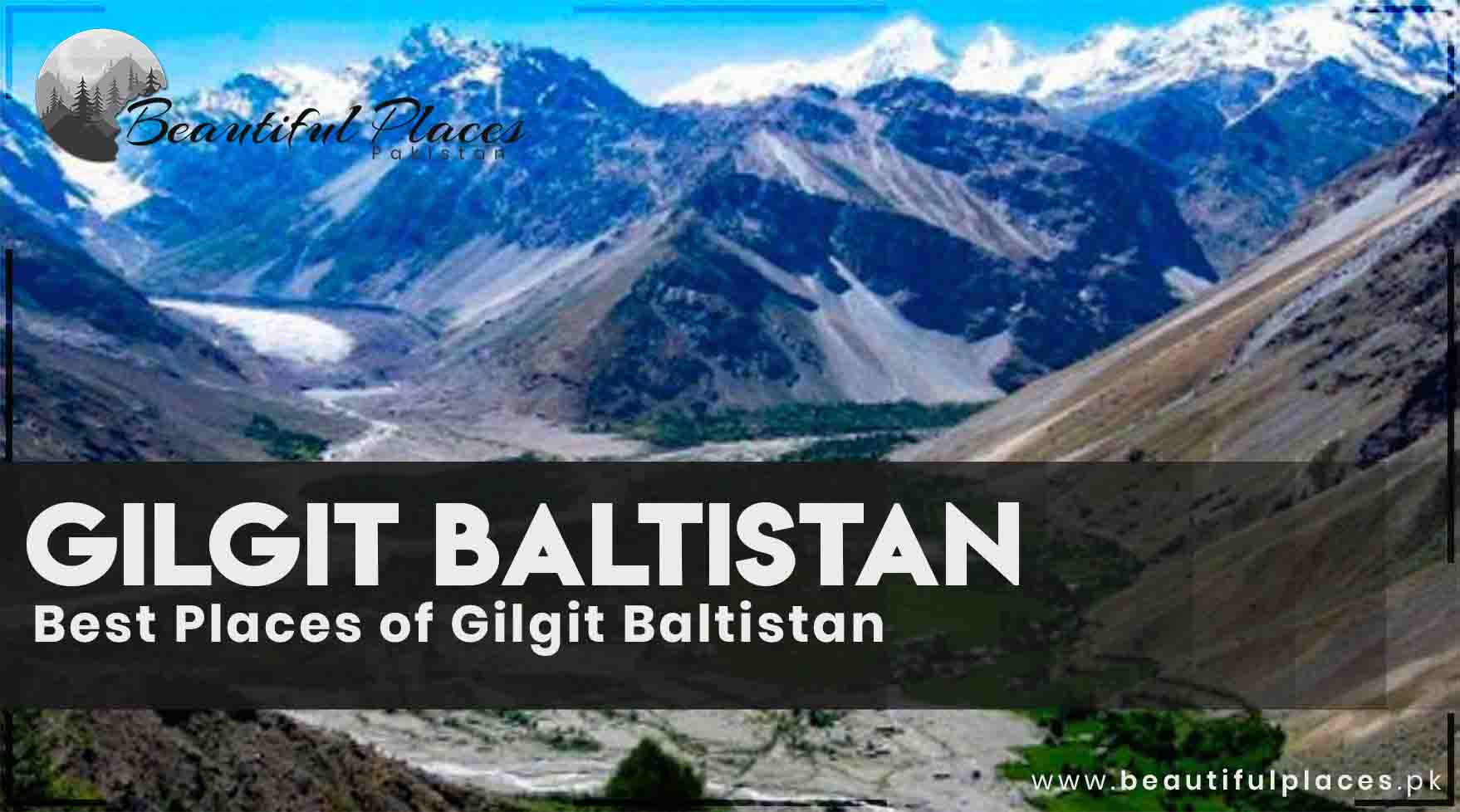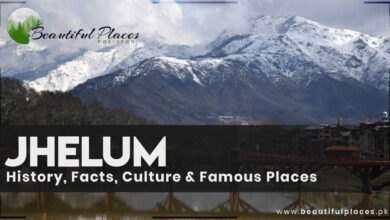Gilgit Baltistan
Gilgit-Baltistan formerly known as the beautiful Northern Areas of Pakistan. This territory is administered by Pakistan Government which is the part of the larger Kashmir region, it is the subject of a territorial dispute area between India, Pakistan, and China. It has borders with Azad Kashmir to the south and Khyber Pakhtunkhwa province to the west, Afghanistan and the Xinjiang region of China is it’s north.
Gilgit Baltistan at a Glance
| Aspect | Information |
|---|---|
| Location | Northernmost region of Pakistan |
| Capital | Gilgit |
| Population | Approximately 2.5 million (as of my last update in 2021) |
| Area | 72,496 square kilometers |
| Languages | Predominantly Shina, Balti, and Brushaski |
| Geography | Mountainous terrain, including several high peaks |
| Climate | Varied, from arid deserts to alpine mountain climates |
| Economy | Primarily agrarian, with tourism and trade gaining importance |
| Culture | A rich blend of various ethnic groups, each with its own traditions |
Now, let’s explore some of the best places that make Gilgit Baltistan a breathtaking destination.
Best Places of Gilgit Baltistan
Gilgit Baltistan, situated in the northernmost part of Pakistan, is a tapestry of enchanting beauty and diverse landscapes. Each place in this region possesses its own unique charm and attractions, drawing travelers from all corners of the globe. Let’s embark on a journey through some of the best places to visit in Gilgit Baltistan, exploring not only their allure but also their specific locations.
Hunza Valley
Nestled among the towering peaks of the Karakoram and Himalayan ranges, Hunza Valley is a haven for nature lovers. With its lush green valleys, serene lakes, and the majestic Baltit Fort, this region is nothing short of breathtaking. Located in the Gilgit District, it offers travelers an opportunity to immerse themselves in local culture while also serving as an ideal destination for trekking and outdoor adventures.
Skardu
Skardu, often dubbed the “Gateway to the World’s Highest Peaks,” is surrounded by some of the loftiest mountains, including the mighty K2. This district, situated in the heart of Gilgit Baltistan, is the launching point for mountaineers and trekkers eager to conquer these giants. Additionally, Skardu boasts the mesmerizing Shangrila Resort, known as “Heaven on Earth,” nestled amidst nature’s grandeur. It’s a destination that blends luxury with the wilderness, making it a must-visit location.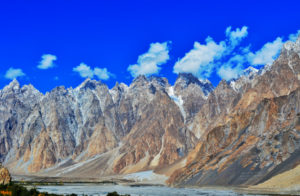
Deosai National Park:
Known as the ‘Land of Giants,’ Deosai National Park is a high-altitude plateau that’s nothing short of enchanting. With vast grasslands, breathtaking vistas, and unique wildlife, this plateau is a natural wonder. Located in the Skardu District, it’s a sanctuary for Himalayan brown bears, marmots, and numerous bird species, offering nature enthusiasts and wildlife photographers a true paradise.
Fairy Meadows
At the base of Nanga Parbat, the world’s ninth-highest mountain, lies Fairy Meadows. Accessible via a trek, this location, in the Diamer District, lives up to its name with its surreal beauty. It offers panoramic views of the towering peak, surrounded by vibrant green meadows against a backdrop of snow-capped peaks. Trekkers and nature enthusiasts find solace and wonder in this pristine corner of the Karakoram.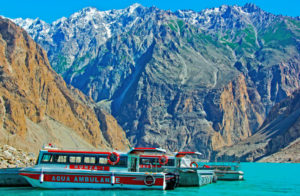
Shigar Fort
The Shigar Fort, located in the Shigar District, stands as an architectural marvel with a rich history. It’s a testament to the cultural and historical heritage of Baltistan. As visitors explore this fort, they step back in time, marveling at the intricate woodwork and ornate interiors that reflect the craftsmanship of the region.
Attabad Lake
In the Gojal Valley of Hunza District, Attabad Lake is a stunning turquoise spectacle created by a massive landslide in 2010. Surrounded by dramatic mountain scenery, this lake is a visual masterpiece. It’s a captivating spot for photographers and boating enthusiasts who wish to sail on the striking blue waters against a backdrop of towering cliffs.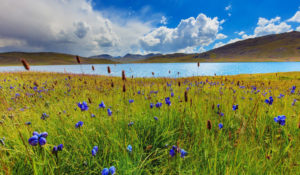
Karimabad
Karimabad, located in the Hunza District, is a bustling town offering a taste of local culture. It’s often the starting point for treks to Rakaposhi and nearby peaks. Visitors can engage with warm and welcoming locals in vibrant markets, sample local cuisine, and explore historical sites, immersing themselves in the region’s cultural and architectural heritage.
PAK-China Boarder
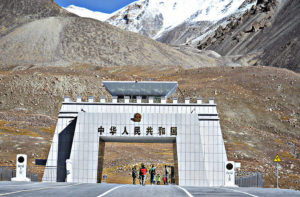
Frequently Asked Questions
Q: Where is Gilgit-Baltistan located?
A: Gilgit-Baltistan is a region in northern Pakistan, bordered by Afghanistan to the west, China to the north, and Indian-administered Jammu and Kashmir to the south and east.
Q: What is the significance of Hunza Valley?
A: Hunza Valley is renowned for its stunning landscapes, historical forts (such as Baltit and Altit), and cultural richness. It’s surrounded by towering peaks and is a hub for trekking and cultural exploration.
Q: What is the Karakoram Highway, and why is it significant?
A: The Karakoram Highway (KKH) is one of the world’s highest paved international roads, connecting Pakistan to China. It passes through the Karakoram Range and offers breathtaking views. It’s a vital trade and travel route.
Q: How was Attabad Lake formed?
A: Attabad Lake was formed in 2010 due to a massive landslide that blocked the Hunza River. The resulting natural dam created the turquoise-blue lake that we see today.
Q: What is unique about Khunjerab Pass?
A: Khunjerab Pass is one of the highest border crossings globally, connecting Pakistan and China. It’s part of the Karakoram Highway and offers stunning views of the surrounding mountains.
Q: What wildlife can be found in Deosai National Park?
A: Deosai National Park is home to diverse wildlife, including the Himalayan brown bear, ibex, red fox, and various bird species. The park is known for its unique ecosystem.
Q: How do tourists reach Fairy Meadows?
A: Tourists can reach Fairy Meadows by trekking or taking a jeep ride from Raikot Bridge. The journey offers breathtaking views of Nanga Parbat, the world’s ninth-highest mountain.
Q: What is the cultural significance of Skardu?
A: Skardu is known for its historical forts, such as Shigar and Skardu Fort. The region also serves as a starting point for treks and expeditions to some of the highest peaks in the Karakoram.
Q: What is the best time to visit Gilgit-Baltistan?
A: The best time to visit is during the summer months (June to September) when the weather is relatively mild, and most roads and attractions are accessible.
Q: Are there any cultural festivals in the region?
A: Yes, cultural festivals like the Shandur Polo Festival are celebrated in the region. These events showcase the traditional music, dance, and sports of the local communities.
Q: Is there any significance to the submerged trees in Attabad Lake?
A: The submerged trees are remnants of the vegetation that existed before the landslide formed the lake. They add to the unique and somewhat eerie beauty of the lake.
Q: How has the formation of Attabad Lake impacted the local communities?
A: While the lake submerged some villages, it has also brought economic opportunities through tourism. The region has adapted to the changing landscape with the construction of tunnels and bridges.
Wind Up Lines
Gilgit-Baltistan, with its diverse landscapes and cultural richness, stands as a testament to the wonders that nature and human history can create. From the enchanting valleys of Hunza and Skardu to the high-altitude plateaus of Deosai and the pristine lakes like Attabad, each destination offers a unique experience. Travelers seeking adventure, cultural immersion, and a connection with nature will find Gilgit-Baltistan to be an unforgettable destination, where every corner tells a story of resilience, beauty, and the harmonious coexistence of humans and the mighty mountains.
